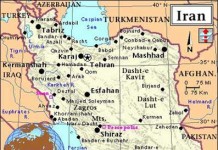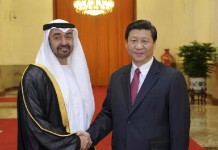Context

After the initial hype, Pakistan-India ties appear to be settling down for the usual. To solve the Afghan quagmire, it was contended that Pakistan would have to shift its defense and security fixation with India. It is commonly believed that its Pakistan’s threat perception from India that causes it to hedge its bets in Afghanistan; by maintaining relations with the Taliban and other Kashmir related Jihadi organizations.
Under this conception, it was assumed that if Pakistan-India ties were to improve, it would translate into enormous economic benefit for the region. Moreover, economic interdependence will make it easy to deal with longstanding conflicts, security issues, including matters of water rights. The budding regional trade will cause Pakistan to desist from the unproductive behavior. Furthermore, the improving ties will mean Pakistan could shift more troops from the eastern border to conduct military operations on its western front with Afghanistan.
This was part and parcel of what came to be known as the ‘regional solution’ for Afghanistan. The concept is a fine theoretical construct. The challenge being, it is not Pakistan, as one would have thought, but India that is dragging its feet. The Indian delay will raise questions about its sincerity.
Analysis
Regional Economic Cooperation
Caught in a bind, Pakistan, and its military bought into the argument. Due to the war on terror, corruption and energy shortages, the nation’s economy lies in ruin. The potential of financial benefit derived from regional trade was too much to resist. Pakistan moved quickly on trade and tariff agreement with Afghanistan, allowing its goods to be transported to India. Pakistan also finally became amenable towards granting India the MFN status. India and Pakistan are now preparing to allow relaxation of visa regimes permitting easy travel for traders. The people to people contacts and the sports ties between the two countries have also considerably improved.
However, while Pakistan is moving swiftly and letting go of many preconditions, India has dragged its feet and has tied progress with security-related clauses. In the post-Mumbai incident environment, this meant Pakistan would have to speed up the investigations for the perpetrators (LeT) of the attack. Moreover, India demanded Pakistan dismantle the jihadi network meant to destabilize it.
The delay will be exploited by the hardliners in Pakistan. It will trigger doubts about the construct that considers Pakistan as the regional villain, and gives the benefit of the doubt to India and Afghanistan. There always was another side of the story that questions the character of India and Afghanistan and towards forming the dreaded pincer style alliance. The role of India in destabilizing Balochistan, and Afghanistan in supporting Mullah Fazlullah has increasingly come to limelight.
Speaking in Chitral on December 4, Pakistan’s interior minister threatened to conduct covert operations against Mullah Fazlullah and Maulvi Faqir in Afghanistan if their activities against Pakistan did not cease. Ironically, the same day, junior home affairs minister Mullappally Ramachandran told Indian parliament, “The terrorist infrastructure in Pakistan or Kashmir remains intact and infiltration attempts from across the border still continue to pose a challenge to the security forces.”
The lack of progress is raising eyebrows with even the staunchest supporters of peace with India in Pakistan. The editor in chief of Friday Times, Najam Sethi wrote in The News on December 7,
“Pakistan has taken unprecedented steps to demonstrate a willingness to change the enemy-state paradigm. It is also grappling with terrorism-related issues. When will the Indian establishment stop clutching at Kargil and Mumbai to dampen the popular groundswell for peace in both countries? When will the Indian media become part of the solution rather than remain part of the problem?”
Indian Challenge
Some analysts have blamed the Indian hardliners and its election cycle for the hangover. There is, however, more to it. Indian foreign policy has other tangents that are complicating its posture in South Asia. Its strategic partnership with the US and Israel is creating challenges especially in its ties with China, Pakistan, and Iran.
Under pressure from the US, it earlier dropped out of the Iran-Pakistan gas pipeline project. Then, following the international sanctions on Iran, it minimized its energy imports from the country. Meanwhile, India expanded its defense relations with Afghanistan, US, Australia and Japan and has increased its outreach to Central Asia and Gulf states. At the same time, it has remained a steadfast member of BRICS. Moreover, its and an aspirant, like Pakistan, for a full membership in Russian and Chinese dominated Shanghai Cooperation Organization (SCO).
As in South Asia, India’s role in the pacific is also gradually looking like a pivot for the US. In this regard, two significant developments took place in the first week of December that are a cause of serious concern for China. First, US Senate approved an amendment, though not yet signed by President Obama, bringing Diaoyu Islands under the purview of US-Japan security pact. The step was interpreted by China as a move to counter its claims and stir up disputes between China and Japan. The action was accompanied by the decision of Indian Navy to start operating in the South China Sea. Admiral Joshi declared on December 3 that Indian Navy would act to protect the commercial interest of state-owned ONGC Videsh.
Conclusion
In short, the state of Pakistan-India ties is connected to a broader dimension than simply the interplay of economic and security affairs of the region. The geopolitical reality dictates both nations need each other to reach their full potential. Pakistan can be a bridge for India to utilize the energy resources of Central Asia. On the other hand, India can be a conduit for Pakistan’s Look East policy. This prospect takes on an added emphasis with the Middle East engulfed in revolts, and Europe and North America in recession. For this to work, however, both would have to chart an independent path as oppose to acting as pivots for global powers. As Kuldip Nayar put it during a 2010 Kashmir Conference held in Washington, if the two countries can manage their differences the 21st century could very well turn out to be a South Asian one.



